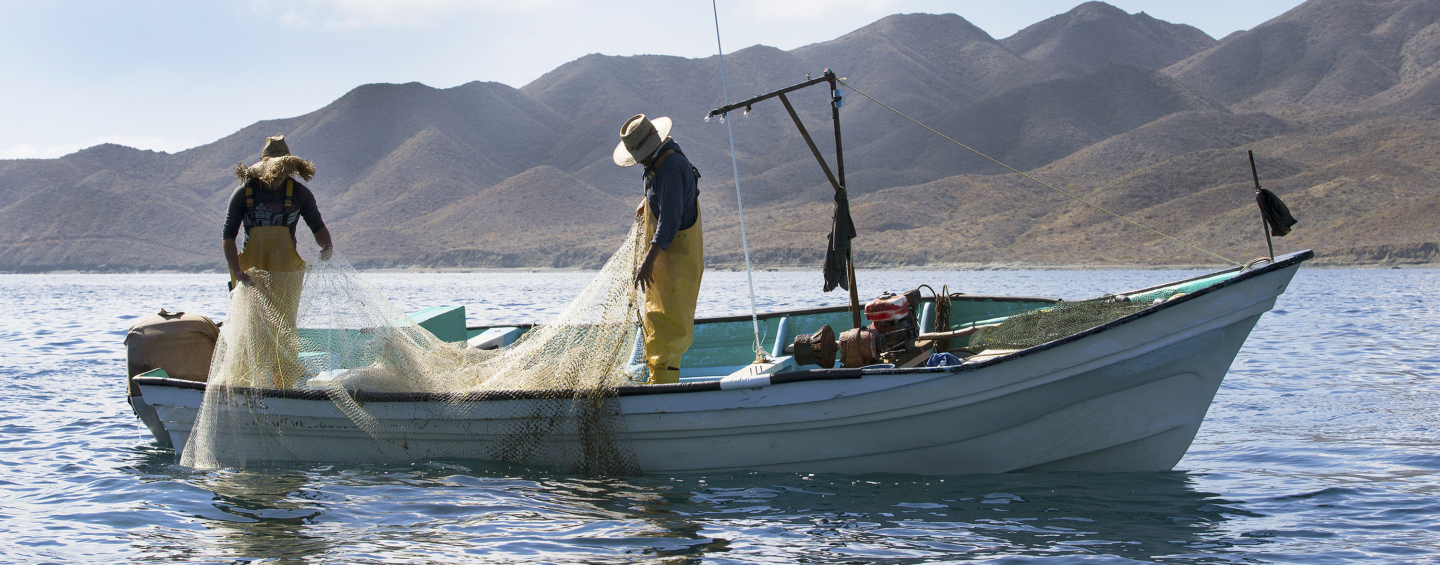Everyone is aware of the UN’s Sustainable Development Goals (SDGs). Goal 17, one of the lesser-talked-about goals, emphasizes the importance of collaboration on a global scale to solve the world’s increasingly complex challenges. Collaboration means different things to different people. We’d like to share SFP’s views and experience.
Two of the main traits of SFP and its staff are “fisheries and aquaculture expertise” and “skill at making the business case for conservation.” But those traits alone only get us so far. Our ability to bring diverse groups together and forge a path for how to move ahead is a key component to our success. For example, some of our Supply Chain Roundtables (SRs) include companies from seven different countries, working in different languages and representing a range of cultures, business models, customers, and investors. And, the companies are commercial competitors! Yet these SRs continue to make progress, recruiting new participants as needed and driving new improvement projects.
SFP didn’t start out knowing how to do this type of “community organizing.” We watched how our corporate partners accomplished this within their own supply chains, and then we shamelessly copied their approaches. There’s also an entire industry of professionals out there with governance experience, including individual companies, industry associations, multi-stakeholder forums, etc. We recruited several of them onto the SFP Board to understand how to adapt and ensure the use of best practices.
Our goal is to maximize the active involvement of key stakeholders over the long haul, and the most important best practices we apply to achieve that goal are:
- Use tried and tested approaches that – critically – are familiar and desired by as many stakeholders around the room as possible. Don’t invent new ways of running meetings and making decisions or waste valuable time testing alternative approaches. For example, when meetings are held at Seafood Expo Global, industry wants to be out on the floor selling, so we have to be clear, consistent, and efficient to get things done.
- Get the right people in the room. Bring together influential stakeholders who are willing to collaborate, quickly resolve differences, and act aggressively to achieve conservation goals. If someone at the table is holding things up or isn’t doing what was agreed, they shouldn’t be there and should be asked to leave.
- Listen carefully to the people being convened, and respond to their concerns immediately. If important stakeholders tell you something is wrong and nothing obvious changes, they tend not to stick around. The collaboration process will fail without a functional feedback loop.
- Find the balance of information. Make sure decision makers are not under-informed, or over-informed, and have only the information they need to make a fully informed decision. It’s an art, and one we got terribly wrong at the beginning of SFP. Let’s just say Jim’s reports to partners explaining what’s going on in FIPs have shrunk from 100+ slides to just five!
- Divide and conquer. Decision makers should not do all of the work in between meetings. Push senior decision makers to delegate the hard work of assessing options to sub-committees and working groups. And when they delegate, make sure they instruct those sub-groups clearly, so analysis and recommendations are exactly what executives need to make decisions. One or two senior decision makers participating in the sub-groups can help make sure they stay on track.
- Establish governance at the beginning. Clear and strong governance is fundamental for sustainable fisheries and aquaculture, and the same applies to long-term collaboration. Participants need to know the decision-making process and rules, in order to achieve an agreed outcome. For example, if four companies out of 10 around the table in favor of a course of action is sufficient, then don’t require consensus. But be careful to balance power such that the majority or minority don’t have outsized influence – both have unappealing negative consequences. Regardless, the end result must be getting concrete and impactful actions agreed.
- Set clear roles and responsibilities. For collaboration to work, all parties should have clear expectations about who will do what, on what timeline, and ultimately what benefits they can expect. It’s important to not make assumptions about the other parties’ intentions and expectations.
Get collaboration right, and no one even notices. Participants just know they had an engaging meeting that produced something really valuable, and they’ll come back to the next one. Get it wrong, however, and even great opportunities for collaboration are quickly lost to frustration, misunderstanding, and mistrust.
SFP is by no means pushing “one size fits all” here. We’d love to hear what has and hasn’t worked for you. As we are all learning and adapting, it is useful to reflect every now and then on how we can better work to reach our conservation goals. All in the spirit of collaboration!

